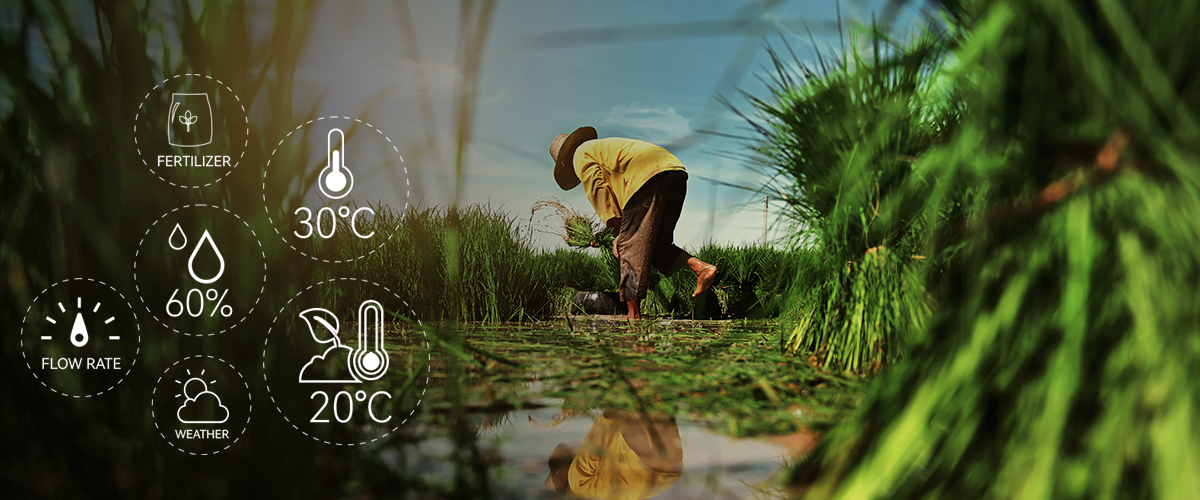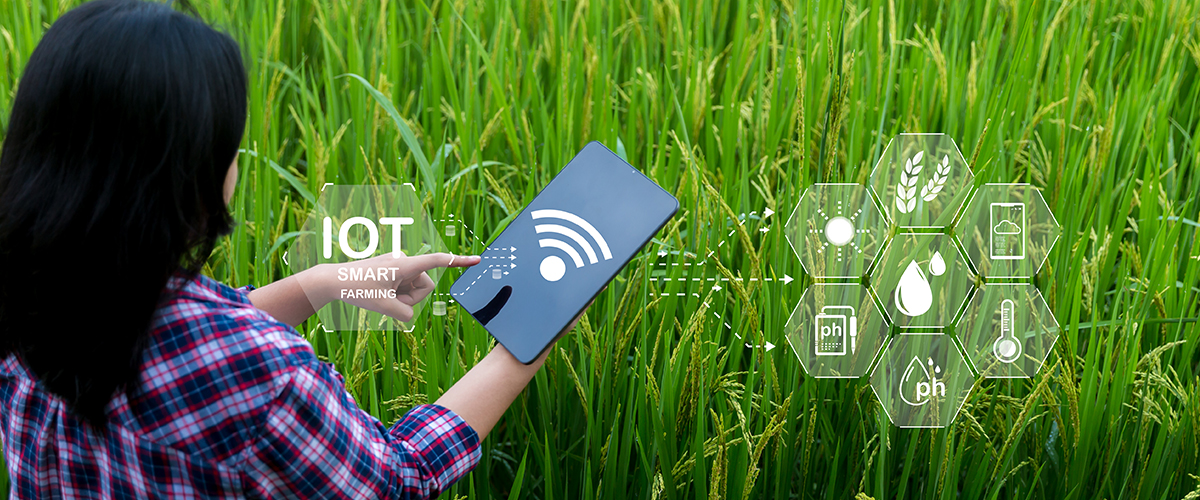Agriculture IoT Solutions
4G/5G Smart Agriculture IoT
Baldr's various products, including electronic control valves, air valves, filters, backflush disc filtration systems, backflush sand media filtration systems. It can be widely used in the field of intelligent agriculture ,especially in the intelligent agricultural irrigation system, which plays an important role.
We continuously increase investments in the search of IoT technology and have developed a range of low-power environmental monitoring sensors, various electronic control valves, 4G remote valve controllers, two-wire decoding controllers, 4G remote pump controllers, automatic backflush filter control systems, and other products. These smart hardware products are the foundation of the Internet of Things. We are also studying cloud computing technology and independently developing a cloud platform for smart agriculture, which will be introduced to the market in the near future.
Introduction to Smart Agriculture IoT
Smart agriculture, also known as digital agriculture, is an innovative agricultural concept that uses advanced technology to transform agriculture. It involves the integration of various products and technologies such as sensors, control valves, and data analysis to optimize agricultural processes and enhance agricultural production efficiency.
Through smart agriculture, farmers can collect data on key factors like soil conditions, weather patterns, and crop growth.. By analyzing real-time and historical data, it becomes possible to optimize plant growth conditions, apply fertilization and irrigation scientifically. This technology-driven approach allows for precise and targeted utilization of resources such as water, fertilizers, and pesticides, resulting in increased yields, reduced costs, resource conservation, and decreased environmental impact.
Smart agriculture uses advanced technology and data analysis, has transformed traditional farming methods. It provides valuable insights to farmers, enabling data-driven decision-making, increased efficiency, enhanced profitability, and environmental sustainability.

Introduction to Smart Irrigation Systems in Smart Agriculture
Smart agricultural irrigation refers to the application of advanced technology and data-driven methods to optimize agricultural irrigation. It involves the integration of sensors, automation systems and data analysis to efficiently monitor and control the irrigation process.
Key features of smart agricultural irrigation systems include:
- Soil Moisture Sensors: These sensors are installed in the field to measure soil moisture levels. They provide real-time soil moisture data, allowing farmers to determine when and how much water is applied to their crops.
- Weather Monitoring: Meteorological stations or satellite data are used to collect information such as temperature, humidity, rainfall, and evaporation rates. The data helps farmers make informed decisions about irrigation plans based on current and predicted weather conditions.
- Automated Irrigation Systems: Smart agricultural irrigation employs precision irrigation automation systems like drip irrigation or sprinklers. These systems are controlled by a central unit that adjusts irrigation schedules based on sensor and weather data to optimize water use.
- Data Analysis and Decision Support: Use advanced data analysis tools process and analyze collected data, providing insights into crop water requirements, irrigation efficiency, and water usage patterns. This information helps farmers make data-driven decisions and improve irrigation strategies.
- Remote Monitoring and Control: Farmers can remotely monitor and control the irrigation process through mobile applications or web interfaces. This allows them to adjust irrigation schedules, set soil moisture thresholds, and receive real-time notifications or alerts.
Smart agricultural irrigation helps optimize water usage, reduce water wastage, increase crop yields, and promote sustainable agriculture. By applying the right amount of water at the right time, farmers can avoid over - or under-irrigation, thereby increasing water efficiency and conserving water resources.
 Introduction to Field Headwater Systems
Introduction to Field Headwater Systems
Field headwater systems provide reliable water sources for crops and are typically located at the edge of fields or close to the irrigation areas, and is the starting point of the irrigation network. The main components of the field headwater system include:
- Water Source: It is typically underground wells, ponds, or reservoirs. The water source should be reliable and have sufficient water supply capacity to meet farmland irrigation needs.
- Pump Stations: Pump stations are used to draw water from the water source and supply it to the irrigation system. Pumping stations are usually equipped with water pumps, valves and control systems that can adjust the amount of water supplied and the timing of irrigation as needed.
- Water Distribution Pipelines: These pipelines transport water from the pumping stations to the irrigation areas in the field. These pipelines are usually made of durable materials, such as plastic or metal, to ensure smooth water flow and minimize losses.
- Control Devices: Control devices are used to monitor and control the operation of headwater systems in the field. These devices may include sensors, automatic control valves, and metering equipment to ensure irrigation accuracy and efficiency.
The field headwater system provides a stable water source, ensuring that crops receive sufficient water supply throughout the growing season. Through precise control and monitoring, farmers can irrigate based on crop needs and soil conditions, improving water use efficiency, and reduce waste and over-irrigation.
Introduction to Intelligent Remote Valve Control Systems
The main function of the intelligent remote valve control systems is to monitor the switching status of valves in real-time through 4G remote communication and issue instructions to switch the valve in real time. Users can access the system remotely via mobile or network interface to check the current valve status and perform remote operations.
The Intelligent remote valve control systems provides the convenience of remote monitoring and control, allowing users to operate valves from anywhere by using their mobile phones or computers, no need to go to the position where the valves located. The system also supports automation, enabling users to preset the opening and closing time and modes. The system operates according to the specified parameters, improve the accuracy and efficiency of operations. In addition, the system also has real-time monitoring and alarm functions; The sensors can monitor the status of the valve in real time, and the system will immediately send an alarm notification to handle the problem in a timely manner.
Intelligent remote valve control systems are widely used, including agricultural irrigation, urban landscaping irrigation, industrial water supply,etc., improving operating efficiency and reducing labor and time costs.
Introduction to Two-Wire Decoding Controllers
Two-wire decoding irrigation control technology originated in Europe and is widely used in the United States and other areas. According to U.S.statistics, more than 70% of large-scale irrigation systems in Florida employ this control technology.
The core of two-wire decoding control technology is to connect the solenoid valves distributed in the field into a system through only two wires. This control system has three major components: controller, decoder, and solenoid valve. When the controller is turned on, electrical and digital signals are sent to the decoders via two wires. Each decoder has its own unique address, when a decoder interprets the control signalsent by the controller, it immediately provides power or cuts power to the corresponding station to achieve the purpose of switching the valve.

